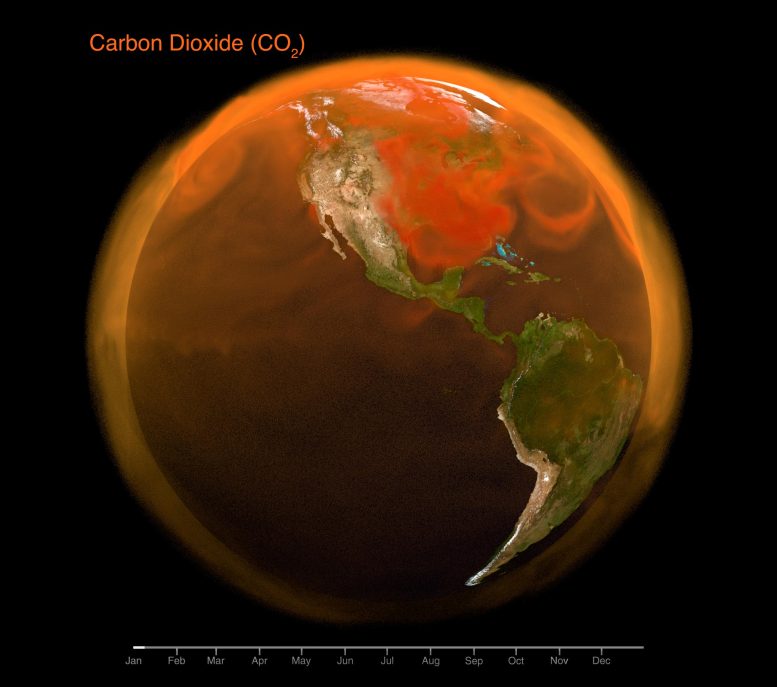NASA’s U.S. Greenhouse Gas Center, unveiled at COP28, offers open-source data and tools to analyze and manage greenhouse gas emissions, fostering collaboration in climate change efforts.
NASA Administrator Bill Nelson, U.S. Environmental Protection Agency (EPA) Administrator Michael Regan, and other United States government leaders unveiled the U.S. Greenhouse Gas Center on December 4 during the 28th annual United Nations Climate Conference (COP28).
NASA’s Role and Collaborations
“NASA data is essential to making the changes needed on the ground to protect our climate. The U.S. Greenhouse Gas Center is another way the Biden-Harris Administration is working to make critical data available to more people – from scientists running data analyses, to government officials making decisions on climate policy, to members of the public who want to understand how climate change will affect them,” said Nelson. “We’re bringing space to Earth to benefit communities across the country.”
Center’s Goals and Resources
The U.S. Greenhouse Gas Center will serve as a hub for collaboration between agencies across the U.S. government as well as non-profit and private sector partners. Data, information, and computer models from observations from the International Space Station, various satellite and airborne missions, and ground stations are available online.
As the lead implementing agency of the center, NASA partnered with the EPA, National Institute of Standards and Technology, and National Oceanic and Atmospheric Administration. Science experts from each of these U.S. federal agencies curated this catalog of greenhouse gas datasets and analysis tools.
“A goal of the U.S. Greenhouse Gas Center is to accelerate the collaborative use of Earth science data,” said Argyro Kavvada, center program manager at NASA Headquarters in Washington. “We’re working to get the right data into the hands of people who can use it to manage and track greenhouse gas emissions.”
The center’s data catalog includes a curated collection of data sets that provide insights into greenhouse gas sources, sinks, emissions, and fluxes. Initial information in the center website is focused on three areas:
- Estimates of greenhouse gas emissions from human activities
- Naturally occurring greenhouse gas sources and sinks on land and in the ocean.
- Large methane emission event identification and quantification, leveraging aircraft and space-based data
Open Source and User Support
An example of a dataset is the methane gas information detected by NASA’s EMIT (Earth Surface Mineral Dust Source Investigation) mission. Located on the International Space Station, EMIT is an imaging spectrometer that measures light in visible and infrared wavelengths and thus can measure release of methane on Earth.
Built on open-source principles, the U.S. Greenhouse Gas Center’s datasets, related algorithms, and supporting code are fully open sourced. This allows anyone to test the data, algorithms, and results. The center also includes user support and an analysis hub for users to perform advanced data analysis with computational resources and an interactive, visual interface for storytelling. NASA encourages feedback and ideas on the center’s evolution. The center is part of a broader administration effort to enhance greenhouse gas information, outlined in the recently released National Strategy to Advance an Integrated U.S. Greenhouse Gas Measurement, Monitoring, and Information System.










I don’t believe the NASA animations. Mauna Loa data show that northern hemisphere CO2 concentrations peak in May, and then decline until around September/October, at which time the concentration starts to increase again. The new NASA website ( https://earth.gov/ghgcenter/stories/tracking-greenhouse-gas-cycles ) shows CO2 apparently increasing from January and spreading into the southern hemisphere around May, without any apparent decline in the northern hemisphere! The December rendition looks nothing like the preceding January! It is pretty slick graphics, but I question whether it is actually science.
Nonsense. This, in the same week as SciTechDaily’s article “To the Moon and Beyond: NASA’s Artemis Engine Roars in Latest Test”? Check out the photos, and consider the climate impact of that thing. COP28? Look up the “U.S. Delegation to the 2023 UN Climate Change Conference (COP28)” the state department published, only mentioning big names, “In addition to those listed, the U.S. delegation will include a wide range of other senior U.S. government officials”, none of whom flew to Dubai on commercial airlines, let alone walked there. Consider how many hundreds of people forgoing a vacation would offset the emissions for each one of their private planes on that trip. The US government is the largest single emitter of greenhouse gas in history, and I think NASA’s Saturn V rocket could be the most-emitting single-use thing ever made.
Wherever you are in the climate debate, NASA and the US government have zero credibility. “NASA data is essential to making the changes needed on the ground to protect our climate. The U.S. Greenhouse Gas Center is another way the Biden-Harris Administration is working…to government officials making decisions on climate policy…”, no, it’s not essential, it’s actually contributing massively to emissions, and it’s the worst possible form of hypocrisy for the history’s worst emitting entity to be dictating how you have to live in the name of climate.